|
Self Teaching Unit:
Sentence Combining
© 2005 Margaret L.
Benner All rights reserved.
This brief instructional unit will examine
strengths and weaknesses in various kinds of sentences. In addition, it
will show you some techniques for creating sentences that are
- economical: use the fewest words
to say the most
- clear: transmit your
intended meaning to the reader easily and immediately
- tight: do not lead the reader through
chain-like masses of "ands," "buts," or "ors"
- graceful: provide a pleasant
experience for the reader
Using a variety of sentence combining methods
will enhance your writing as well by providing a mixture of sentence types and
thereby keep your reader from becoming bored.
In general, avoid the following kinds of
sentences:
1. Primer style sentences - ERROR

- Combine
these short, choppy sentences into one sentence by eliminating unnecessary
words and
subordinating where possible.

2. Loose, stringy, run-on, over-coordinated
sentences - ERROR

- Combine
these loose ideas into one sentence by eliminating unnecessary words
and subordinating
where possible.

3. Excessively subordinated, tangled
sentences - ERROR

- Reduce
subordinated clauses to words and eliminate unnecessary words.

In addition, use one or more of the following
methods to combine sentences into clear, economical, tight units of thought:
Method #1: Reduce one sentence into a
present participial phrase (-ing phrase).
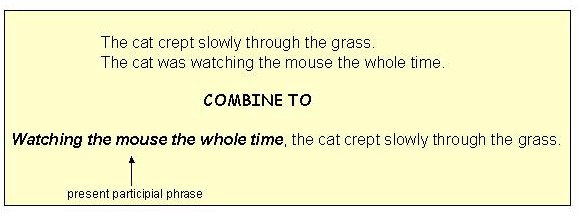
OR

The
emphasis in each example above is different: Example 1 emphasizes creeping
through the grass while example 2 emphasizes watching the mouse.
Method #2: Reduce one sentence into a past
participial phrase (-ed or -en verbal phrase).
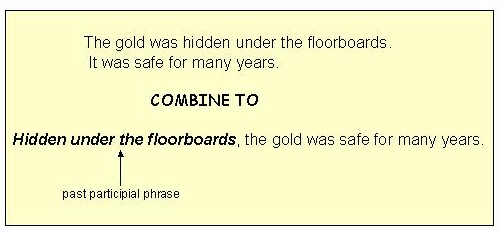
Method #3: Reduce one sentence into an adverbial
clause (beginning with when, if etc.).
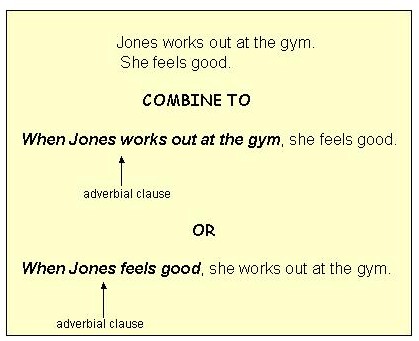
Note
that each combination in the above example emphasizes a different part of the
sentence. The first sentence combination emphasizes that Jones feels good;
the second emphasizes that she works out.
comma use with adverbial clauses
Method #4: Reduce one sentence into an
adjectival clause (beginning with that, which, who, etc.).
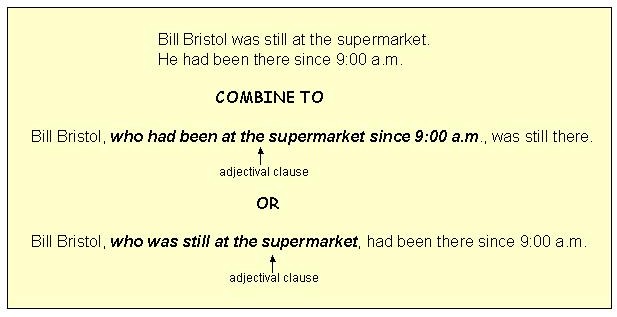
Note
that each combination in the above example emphasizes a different part of the
sentence. The first sentence emphasizes how long Bill Bristol was at the
supermarket; the second emphasizes what time he got there.
comma use with adjectival clauses
Method #5: Reduce one sentence into an appositive
(re-namer).
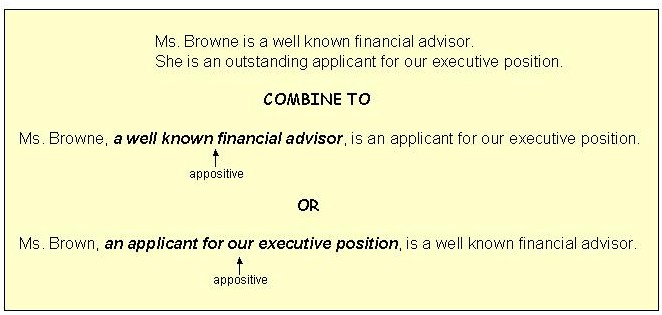
Note
that each combination in the above example emphasizes a different part of the
sentence. The first sentence emphasizes that Ms. Browne is an applicant;
the second emphasizes that she is a well known financial advisor.
Method #6: Create a
series.
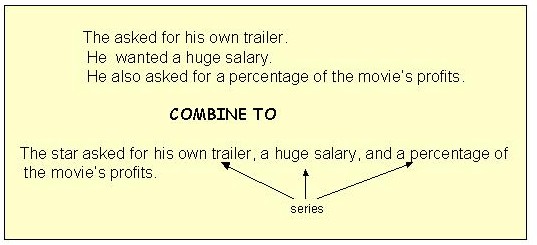
Here are some examples that use several methods
at a time to combine sentences. Note carefully how all information has
been included in the final sentence in a concise, clear, graceful manner.
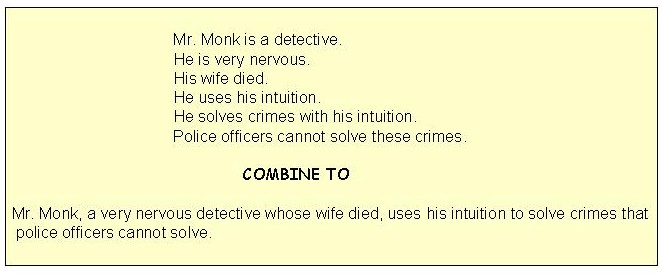
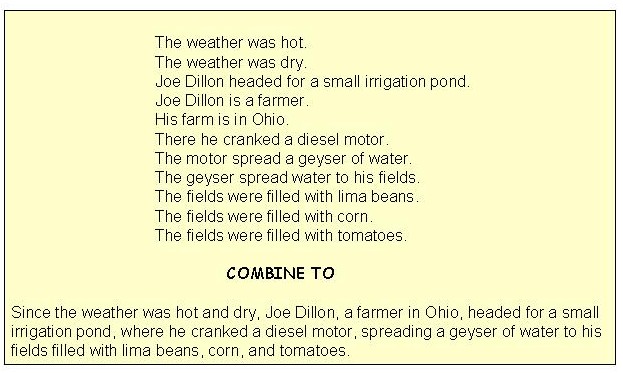
Click on the link to complete the post test for this self-teaching unit.
|